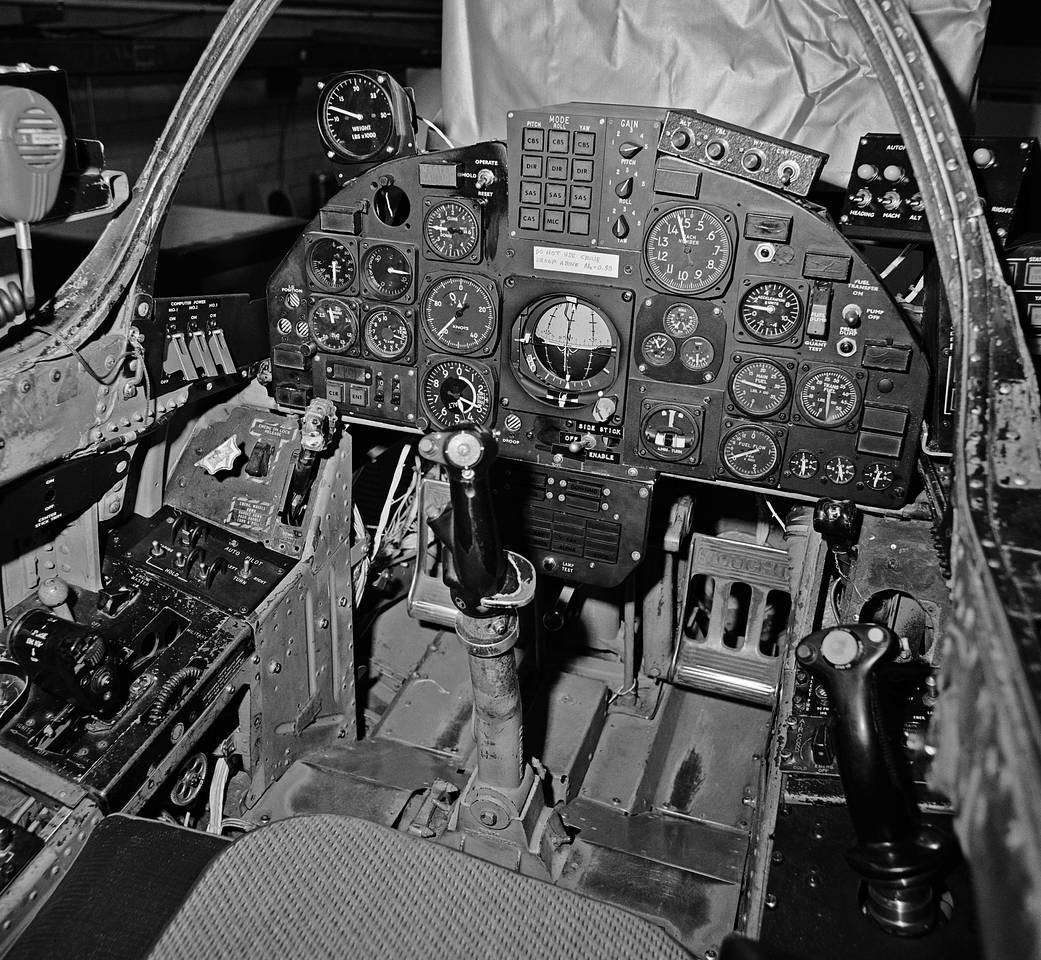E-28613
F-8 Digital Fly-By-Wire (DFBW) Iron Bird simulator cockpit. It was an F-8A ‘retired’ by the USN. The iron bird was a faithful reproduction of the F-8 DFBW aircraft (a “C” model). This cockpit tied to 6-degree-of-freedom digital simulation. The airframe had power actuators and FBW triplex secondary actuators that moved the power actuator valve.
Electrical power and hydraulics were from ground sources, and fed into the same locations as the engine-driven sources in the airplane.
The side stick was installed to allow the YF-16 Test Pilot (Phil Ostreicher) to evaluate a side stick FBW system prior to his first flight in the YF-16. It was connected only to the triplex analog system. Wilt Lock led the integration of this side stick with the Sperry analog FBW system.
The unique F-8 DFBW mode control panel:CBS: Computer Bypass SystemDIR: Direct (no feedback)SAS: Stability Augmentation System–
basically pitch, roll, and (washed out)
yaw rate feedbackCAS: Command Augmentation System close to C-Star (C*) system developed by Boeing.MLC: Correct! Maneuver Load Control to move load inboard to attempt to reduce wing root bending in elevated g flight. Did not work as well as “hoped-for.” Reason: the pitching moment from the flaps required pitch trim to higher AOA, increasing wing root bending, negating some of the bending load reduction from flap MLC control law.
Note the power control switches for the 3 IBM AP-101 digital computers on left.
Also note the round dials are simulator instruments ‘closely’ matching the faces of the flight instruments.May 21, 1975NASA Photo / NASA› Simulator Description




























